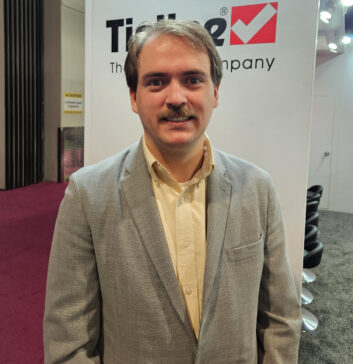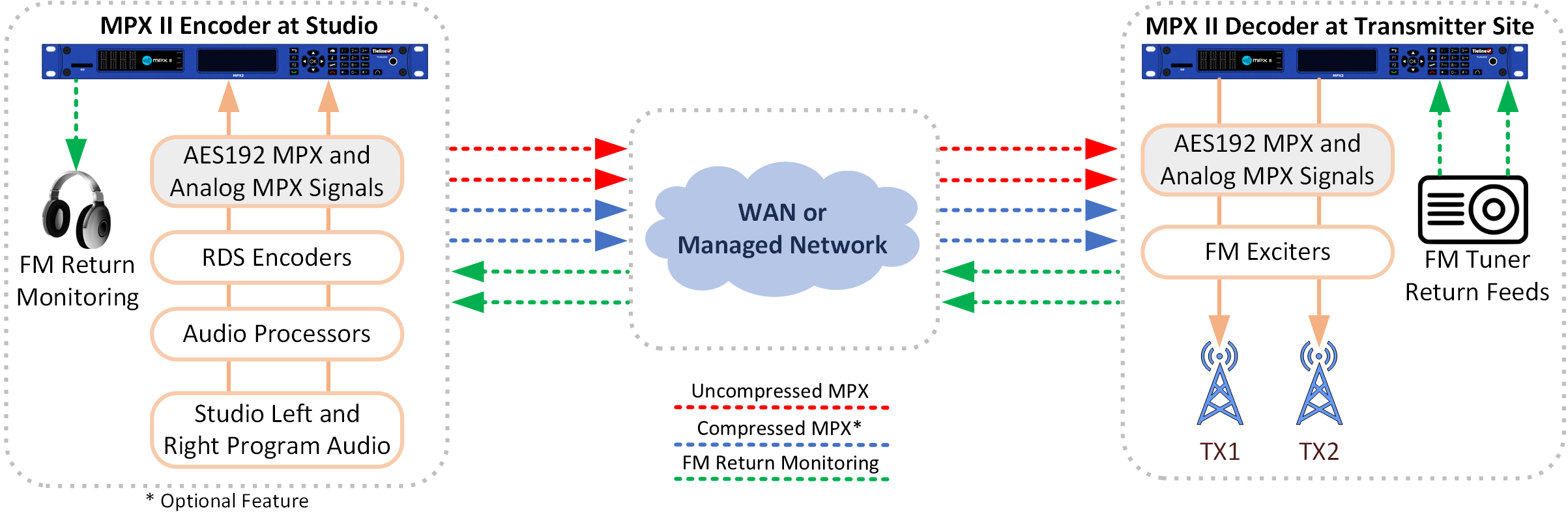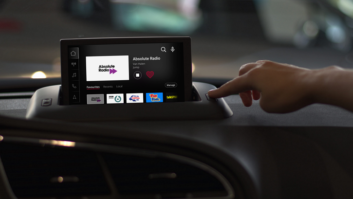 A current Radio World ebook looks at trends in studio-transmitter links. This article is excerpted from that.
A current Radio World ebook looks at trends in studio-transmitter links. This article is excerpted from that.
Among the broadcast audio products made by Tieline are codecs suitable for STL use, and more are coming. Jacob Daniluck is Tieline’s VP of sales for the Americas.
Radio World: Jacob how are studio-to-transmitter links different today than in the past?
Jacob Daniluck: The availability of IP in so many regions delivers more options to broadcasters these days, compared to when expensive synchronous data links and satellite transport options were the only available solutions for many networks.
MPX codecs and progressively better IP connections in rural areas will help shift broadcasters to solutions with reduced STL transport costs, while still providing greater flexibility. Plus, IP technologies deliver affordable redundancy options and real-time monitoring and control that was not always possible previously.
RW: What is Tieline’s involvement in this area?
Daniluck: Tieline specializes in audio codec solutions for STLs with our Gateway and Gateway 4 products. The Gateway 4 supports transmission of two bidirectional stereo STL signals, whereas the Gateway offers up to 16 audio channels, so you can broadcast eight discrete bidirectional stereo streams to multiple STL destinations.
Both also support multicasting and multiple unicasting to distribute IP streams around a network or to affiliates. Program configurations can be remotely changed or adjusted using an automated scheduler, providing flexibility in terms of content delivery and connections.
Tieline also recently announced two new MPX codecs that will be unveiled at NAB2023. Both the MPX I and MPX II support sending the full uncompressed FM signal, or compressed μMPX to deliver high-quality multiplexed FM signals at lower bitrates. They support analog MPX (BNC) or MPX over AES192 to deliver a range of flexible composite encoder and decoder configurations for many applications. Both also offer return FM monitoring options and an optional satellite tuner card supports decoding DVB-S or DVB-S2 signals.
RW: What role are technologies like Starlink satellite, 5G, fiber broadband, LTE and cloud playing?
Daniluck: Advancements in modern communications forms, such as the ones you mention, are playing big roles for broadcasters not just throughout the U.S. but the world. These forms of connectivity offer a more affordable solution for transportation, or provide a great means for secondary/back-up connectivity to STL sites.
We’ve seen clients using Starlink services for primary redundant internet connections to ensure rock-solid connectivity using Tieline’s SmartStream Plus technology. We have also seen clients using 5G technology to not only broadcast live from stadiums for remotes, but more importantly set them up for backup standby connections for their tower sites due to the metered nature of some wireless providers.
At the end of the day, newer and more modern communications technologies are something all engineers should consider, especially if they are still paying for services like T1, DSL or cable internet services.
RW: What’s coming that will further change the landscape?
Daniluck: Bandwidth and latency developments will be the next big advancement within the world of transmitter locations. As these are often on city borders or in rural America, station engineers are no strangers to putting in whatever they can at those sites, whether it is a point-to-point wireless link or a DSL link, as that is all they have access to.
We’ve seen a number of clients starting to be able to put in fiber lines at these sites, with outrageous costs associated with them. Whether or not ISPs decide to upgrade networks willingly, or if they are forced through legislation, these network advancements will trickle down to the broadcast industry and allow networks and engineers to accomplish more.
RW: How have composite FM multiplex codec solutions changed the landscape?
Daniluck: Sending transmission-ready FM-MPX composite signals from the studio allows broadcasters to maintain audio processing and RDS data insertion at the studio. This significantly reduces capital and operational costs by eliminating expensive processors and RDS equipment from transmitter sites, which in turn reduces a network’s carbon footprint by lowering on-site power consumption, wiring and rack space requirements. In addition, fewer site visits for service and support are required.
The ability to connect over WANs like the internet at low bitrates with µMPX is also a game-changer for broadcasters, as it dramatically expands the number of STL sites that can receive composite signals, reducing hardware requirements at many STL sites significantly.
The uMPX compression algorithm is designed for FM and maintains perfect peak control, which eliminates the need for an expensive audio processor at each transmitter site. µMPX also allows for multipoint distribution via multicasting or multiple unicasting. This reduces costs further by affordably replicating streams at the studio using a single encoder, similar to how baseband IP audio streams can be replicated in audio codecs. This eliminates the need for multiple encoders, as well as processors and RDS equipment at transmitter sites. When this is multiplied across multiple STL sites the savings can be enormous.

RW: How are engineers sending composite baseband at low bandwidth?
Daniluck: Uncompressed MPX over AES (AES192) has a high bandwidth requirement of between 2.3 Mbps (16-bit) and 4.6 Mbps (24-bit). This requires high-capacity IP links like fiber with reliable QoS. Compressed MicroMPX or µMPX is supported at much lower bitrates over both managed and unmanaged IP links. Theoretically any IP network with enough bandwidth available can transport low-bandwidth µMPX signals, e.g. 320 kbps for low-bitrate µMPX composite.
In addition, Tieline’s MPX codecs support encoding MPEG-TS over IP to transmit UDP streams over DVB satellite connections, which is another low-bandwidth solution. MPEG-TS is the digital encoding format used in broadcasting over DVB satellite systems. When the satellite signal is received at the decoding MPX unit, a satellite tuner card can decode the DVB-S or DVB-S2 signal and the MPX unit outputs MPX composite directly into the exciter.
RW: What are the benefits of a hardware IP codec versus solutions like traditional microwave or newer software solutions?
Daniluck: First let’s talk about hardware IP codecs, and microwaves links. Depending on when and who you got your microwave link from, you may have a viable easy-to-use solution for getting audio from A to B. However, not all microwave links support two-way audio support, and nowadays some microwave link manufactures don’t offer an audio channel, instead they are opting for a data only channel, which would still require the use of a hardware or software-based codec.
Which brings me to the second part of your question regarding hardware vs. software-based solutions. In my opinion, software starts to fall off in comparison due to the fact that you the user have to do all the component optimizations. This includes picking the proper parts to go together, as well as configuring and ensuring the other software functions on that operating system do not impact what you want the software-based codec to do. Whereas, when compared to a hardware-based solution, you don’t have to worry about matching audio cards with certain specs like RAM, CPU and operating system, nor do you have to worry about rogue pieces of software like Microsoft’s notorious updater or anti-virus software. In your hardware codec everything is integrated and optimized for 24/7/365 mission critical broadcast operations.
RW: When considering IP codecs for STL, are there best practices you recommend?
Daniluck: STL sites are often remote and far from data centers, but hardware codecs have proven they can deliver reliable solutions over a wide variety of IP transmission paths. Dedicated fiber paths are preferred for STL codec links, with at least one reliable backup path also advisable. However, success can also be achieved with a combination of wireless point-to-point links, satellite connections like Starlink, and cellular.
Often a mix of IP transport options is used, and layers of IP redundancy like SmartStream Plus redundant streaming, Fuse-IP network bonding and FEC mitigate against packet loss to deliver rock-solid performance 24/7/365. Automated jitter buffer management is also advisable over imperfect IP networks with variable jitter. Backup options include alternative connections, Icecast streaming, input bypass to outputs, as well as audio file backup.
A bidirectional transmission path allows for remote audio monitoring and control with software tools like the Cloud Codec Controller, with automated alarms and SNMP providing additional automated monitoring. Remote management software is worth its weight in gold as it helps fix problems fast to reduce time off the air and minimizes remote transmitter site visits.
Security is vitally important, and always ensure you use secure passwords — never the default one! Apart from recommending firewalls and VPNs, some other features we have incorporated include the ability to install SSL security certificates to ensure codecs are trusted devices within your network.
Tieline codecs also have the ability to configure SIP filter lists, which provide filtering of SIP URIs and User Agents to provide greater security when using SIP. Also, Tieline offers firewall settings to enable or disable a range of firewall-related network services, and we have implemented Cross-Site Request Forgery protection, which avoids unwanted attacks on web applications.







